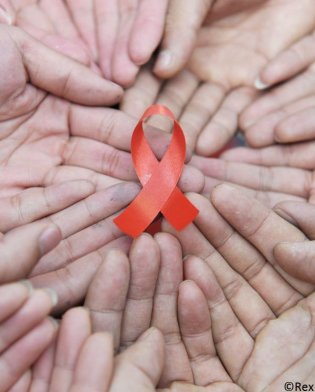Approximately one in 300 HIV positive people have a natural resistance
to the virus that means they can control it without taking retroviral
drugs. Scientists now believe that the key to developing a vaccine
against the disease could be held within the cells of these individuals.

People with HIV have a high number of ‘killer cells’ or cytotoxic T lymphocyte (CTL) that fight the HIV virus. But despite having these cells in high numbers, the majority of patients still go on to develop the AIDS virus and need to take drugs in an attempt to control its progress.
The HIV virus attacks and kills white blood cells called CD4, which lower sufferers’ immune systems and leaves them open to opportunistic infections such as pneumonia. Scientists have long wondered why some individuals appear to be able to harness the power of their ‘killer cells’ more effectively than others to prevent the destruction of their CD4 cells. And on Sunday, they revealed a breakthrough discovery.
Research has found that it’s not the number of killer cells a person has, but instead how effectively they work that creates natural resistance.
"We know different people will progress to AIDS in a varying amount of time. Some people progress very quickly and some very slowly," said Simon Fraser University’s Mark Brockman, who worked with Zabrina Brumme and doctors at the Ragon Institute to compare how people progress from HIV to AIDS. "The Boston lab is interested in people progressing the slowest."
The scientists discovered that the T-cell receptors worked more efficiently in those people who had natural resistance to the virus. They believe this is why previous attempt to create a vaccine have failed, as they have developed the ‘killer cells’ but have yet to recreate the most efficient cell receptors.
"We now think, in the lab, we can identify the cells that are more functionally associated with slow progression," said Brockman. "The next big question will be to develop a vaccine.”
Brockman added that this would take some time, but that researchers are buoyed by this clue to how the disease could be kept at bay.

People with HIV have a high number of ‘killer cells’ or cytotoxic T lymphocyte (CTL) that fight the HIV virus. But despite having these cells in high numbers, the majority of patients still go on to develop the AIDS virus and need to take drugs in an attempt to control its progress.
The HIV virus attacks and kills white blood cells called CD4, which lower sufferers’ immune systems and leaves them open to opportunistic infections such as pneumonia. Scientists have long wondered why some individuals appear to be able to harness the power of their ‘killer cells’ more effectively than others to prevent the destruction of their CD4 cells. And on Sunday, they revealed a breakthrough discovery.
Research has found that it’s not the number of killer cells a person has, but instead how effectively they work that creates natural resistance.
"We know different people will progress to AIDS in a varying amount of time. Some people progress very quickly and some very slowly," said Simon Fraser University’s Mark Brockman, who worked with Zabrina Brumme and doctors at the Ragon Institute to compare how people progress from HIV to AIDS. "The Boston lab is interested in people progressing the slowest."
The scientists discovered that the T-cell receptors worked more efficiently in those people who had natural resistance to the virus. They believe this is why previous attempt to create a vaccine have failed, as they have developed the ‘killer cells’ but have yet to recreate the most efficient cell receptors.
"We now think, in the lab, we can identify the cells that are more functionally associated with slow progression," said Brockman. "The next big question will be to develop a vaccine.”
Brockman added that this would take some time, but that researchers are buoyed by this clue to how the disease could be kept at bay.
No comments:
Post a Comment